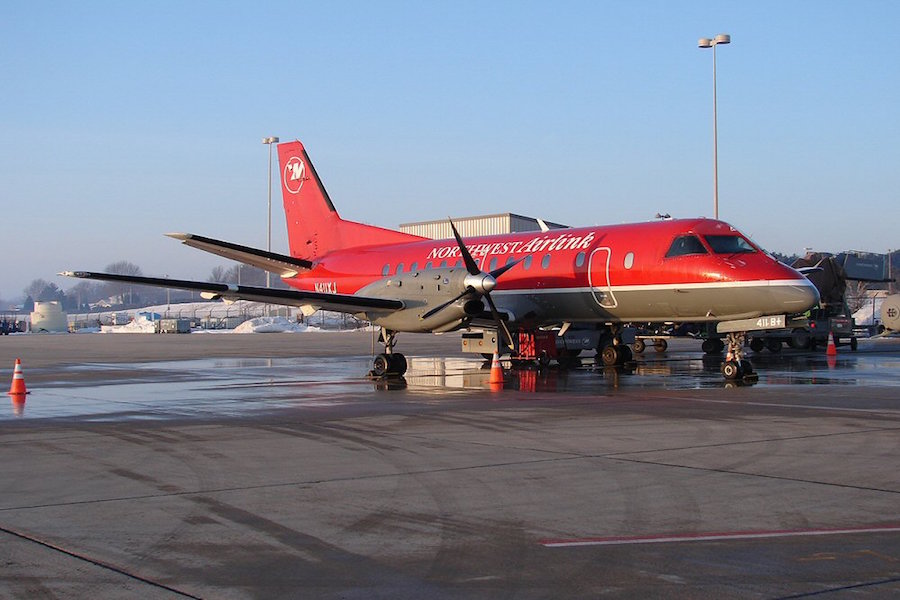
How Southwest Squashed High-Speed Rail in Texas
In the early 1990s, a bullet train named the Texas TGV promised to revolutionize transportation in the Lone Star State.…

A Mesaba Saab 340 in Northwest Airlink colors (Photo provided by Cory W. Watts [CC BY-SA 2.0 (http://creativecommons.org/licenses/by-sa/2.0)], via Wikimedia Commons)
In 1944, Gordy Newstrom founded Mesaba Aviation for the purpose of transporting employees of the Blandin Paper Mill Company. It would not be long, however, until the small Minnesota-based company would expand to become a much more significant presence in the airline industry.
Purchased by new owners in 1970, the carrier commenced scheduled passenger operations on February 4, 1974, serving small rural areas in Minnesota. Following another purchase later that decade, Mesaba began to gain power, enabling the carrier to start operations to North and South Dakota, along with Iowa, with a decent fleet of Beechcraft 99 turboprops. Becoming a codeshare partner with Republic Air the next year, Mesaba seemed to be entering a positive uphill climb. Even when their new codeshare partner merged with Northwest Orient, Mesaba was able to transfer their codeshare, becoming a Northwest Airlink carrier.
Over the next few years, Mesaba’s fleet saw aircraft such as the Fokker F27, the Fairchild Metro, the Dash 8, and the Saab 340. In the ’90s, the Avro RJ85 became the first jet aircraft to be incorporated into their fleet. An enhanced version of the popular BAe 146-200, the Avro RJ85 used more efficient engines and offered passengers a more comfortable cabin. The airline took delivery of their final Avro jet in 2000, however, they succeeded in becoming the largest operator of the aircraft. Eventually, the Avro RJ85s would be replaced by Canadair CRJs.
Trouble struck in 2005 when Northwest Airlines filed bankruptcy. Suffering from an unusual and downsized fleet resulting from Northwest’s problems, as well as a lack of financial support from the larger carrier, Mesaba followed suit, also filing bankruptcy the same year. Yet, in April 2007, Northwest acquired Mesaba Airlines, establishing the smaller airline as Northwest’s subsidiary. The next year, Northwest was folded into Delta, who sold Mesaba to Pinnacle in 2010. Mesaba continued operations using all turboprops for two years. Then, on January 4, 2012, Pinnacle Airlines absorbed the carrier entirely. Their operating certificate was surrendered seven months later, effectively eliminating all that remained of Mesaba.
Despite the tragic end of their operations as a result of being caught in several chaotic mergers and financial issues, Mesaba has left a strong legacy behind. Throughout their 68 years of existence, including their years as Mesaba Aviation, the airline did not suffer any documented fatalities, giving them status as one of the safest carriers to ever fly.
Ashley is currently a senior in high school and plans on pursuing a career in aviation or journalism. Her favorite airplanes include the Boeing 777, 737MAX, and Airbus A350. She enjoys taking flights on various airlines to different airports and planespotting at her local airports.
Receive a daily dose of the airline industry's top stories along with market insights right in your inbox.

In the early 1990s, a bullet train named the Texas TGV promised to revolutionize transportation in the Lone Star State.…

The airline industry is well-known for being cutthroat and competitive, where there are turbulent times and moments of success and…

Rarely does an airline operate narrow-body aircraft in regional markets outside of its home country. While this practice was more…



